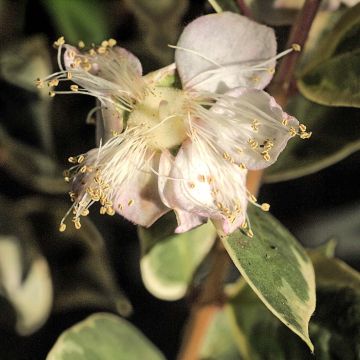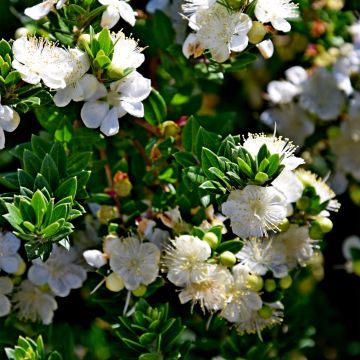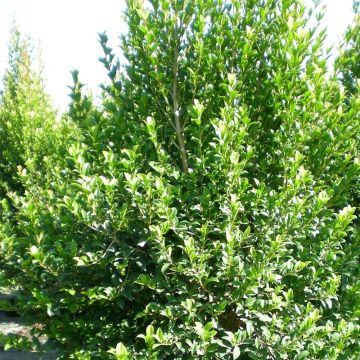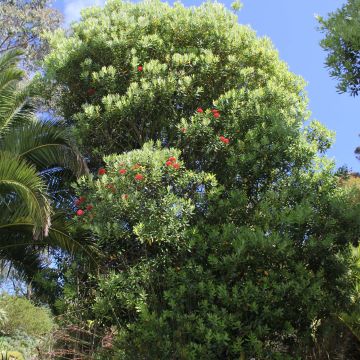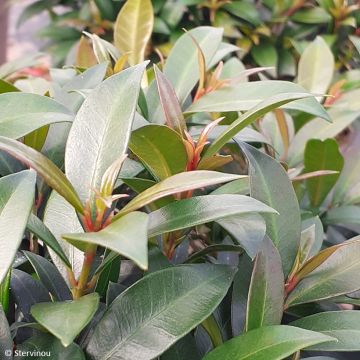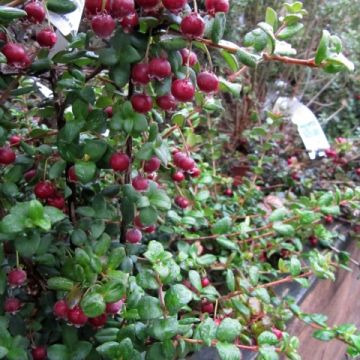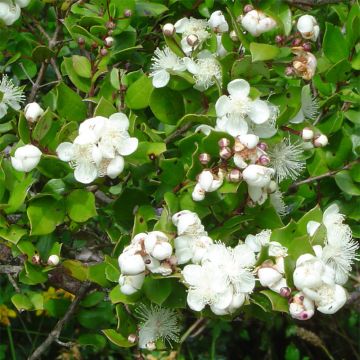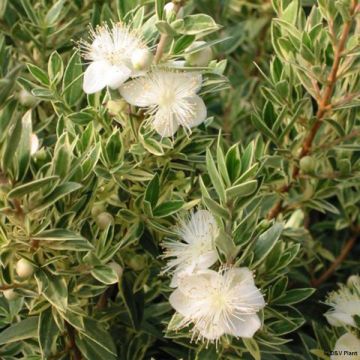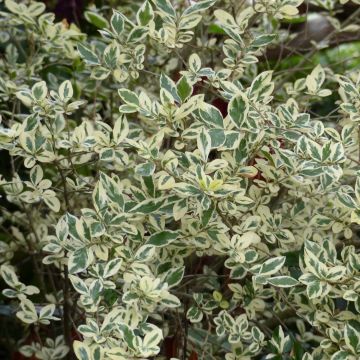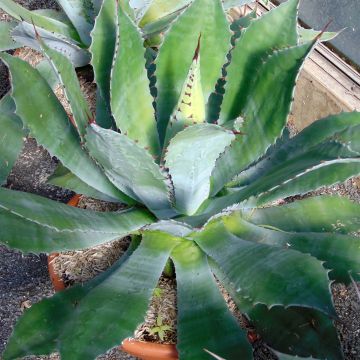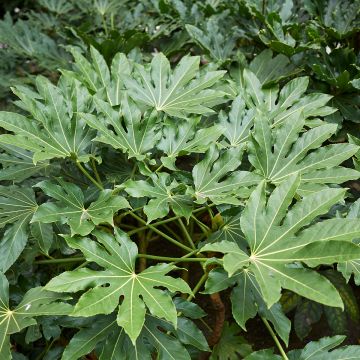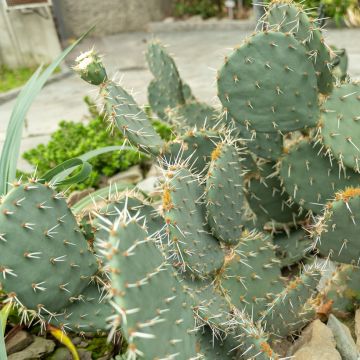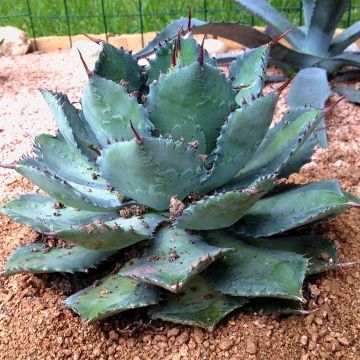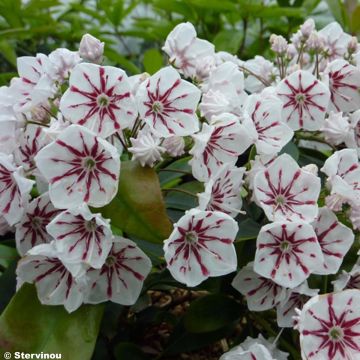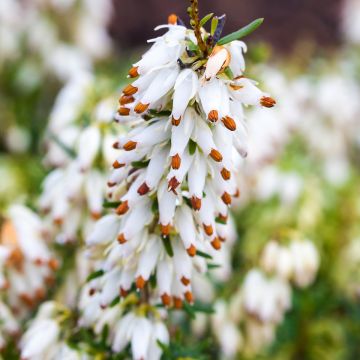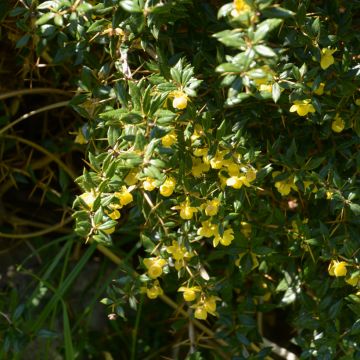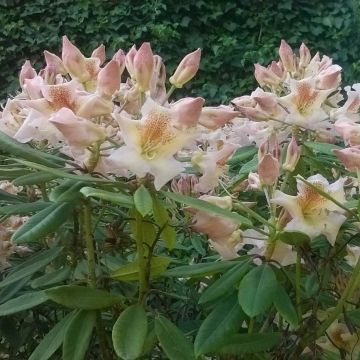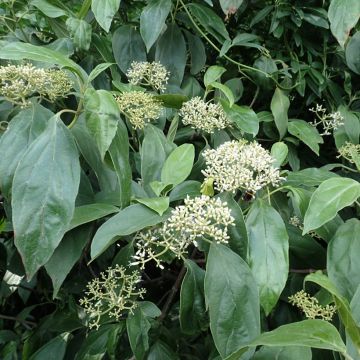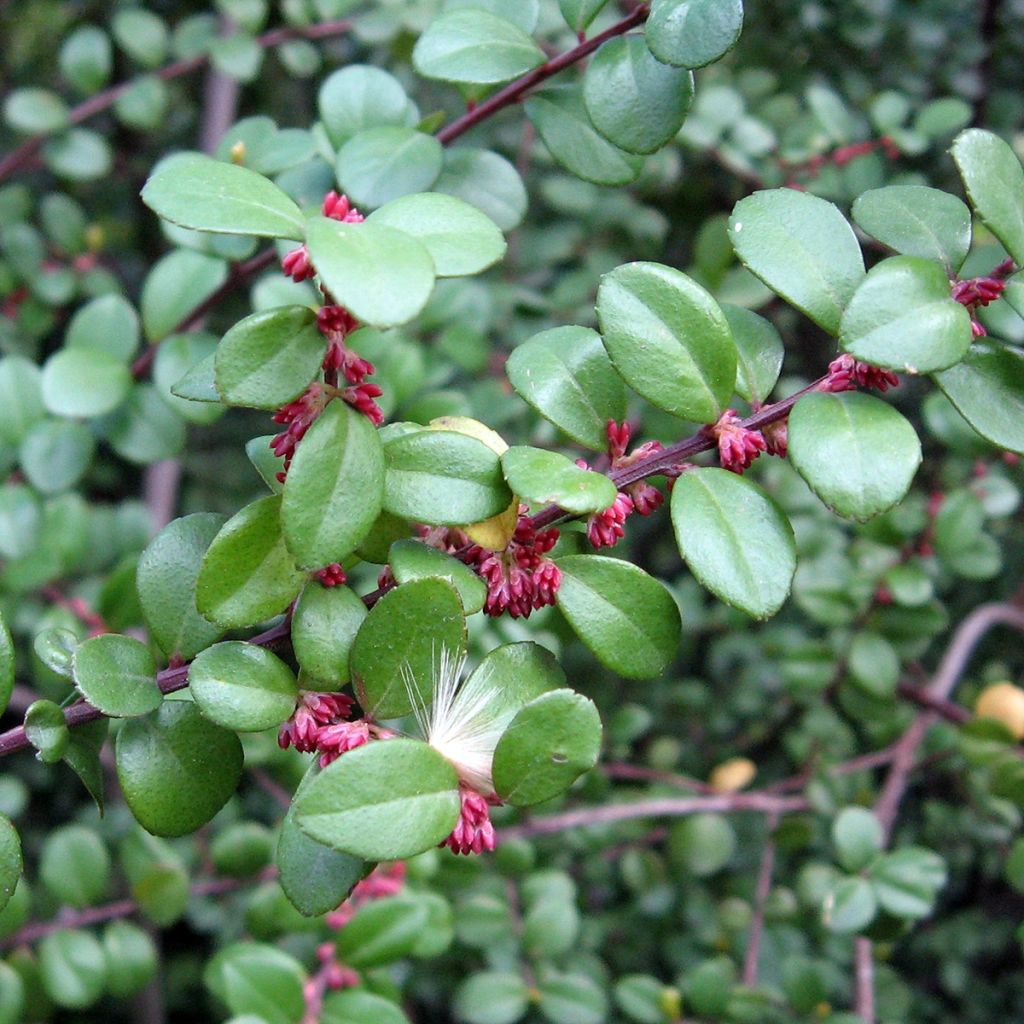

Myrsine africana
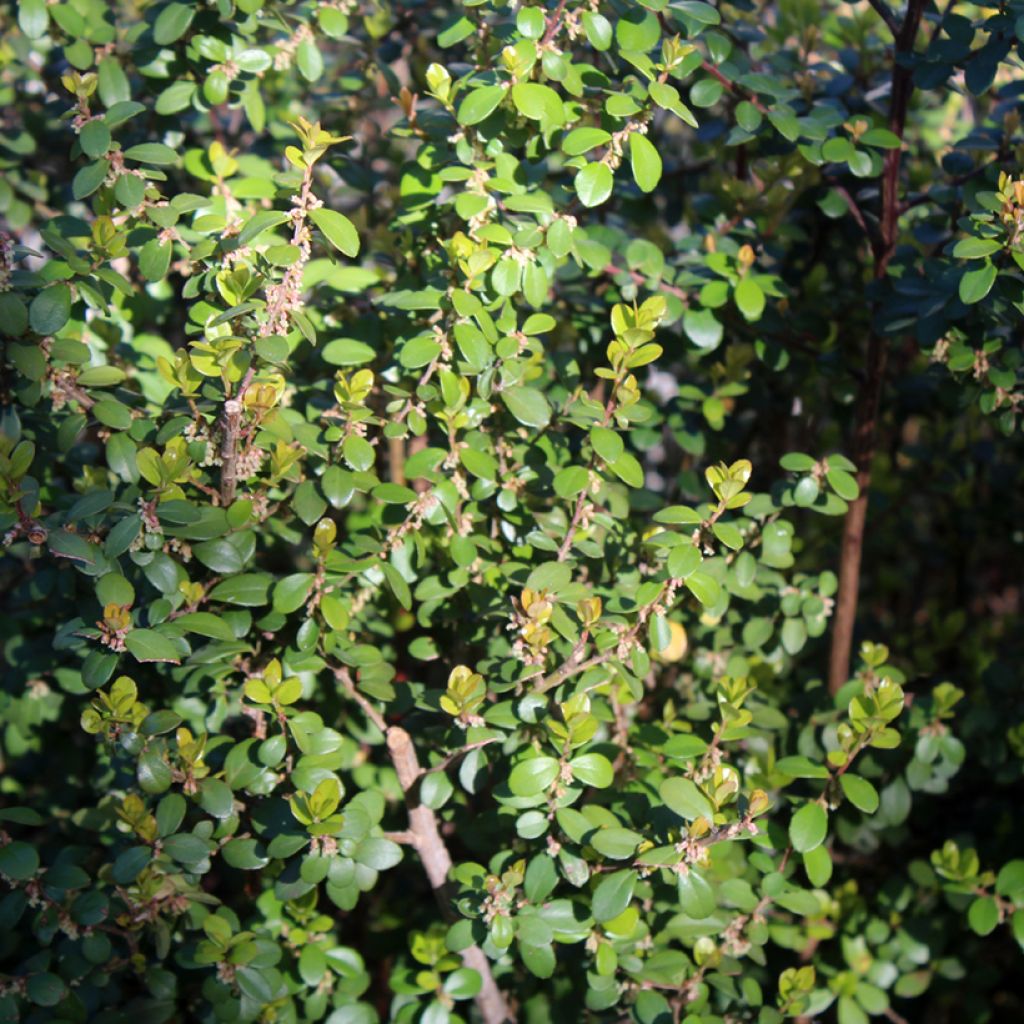

Myrsine africana
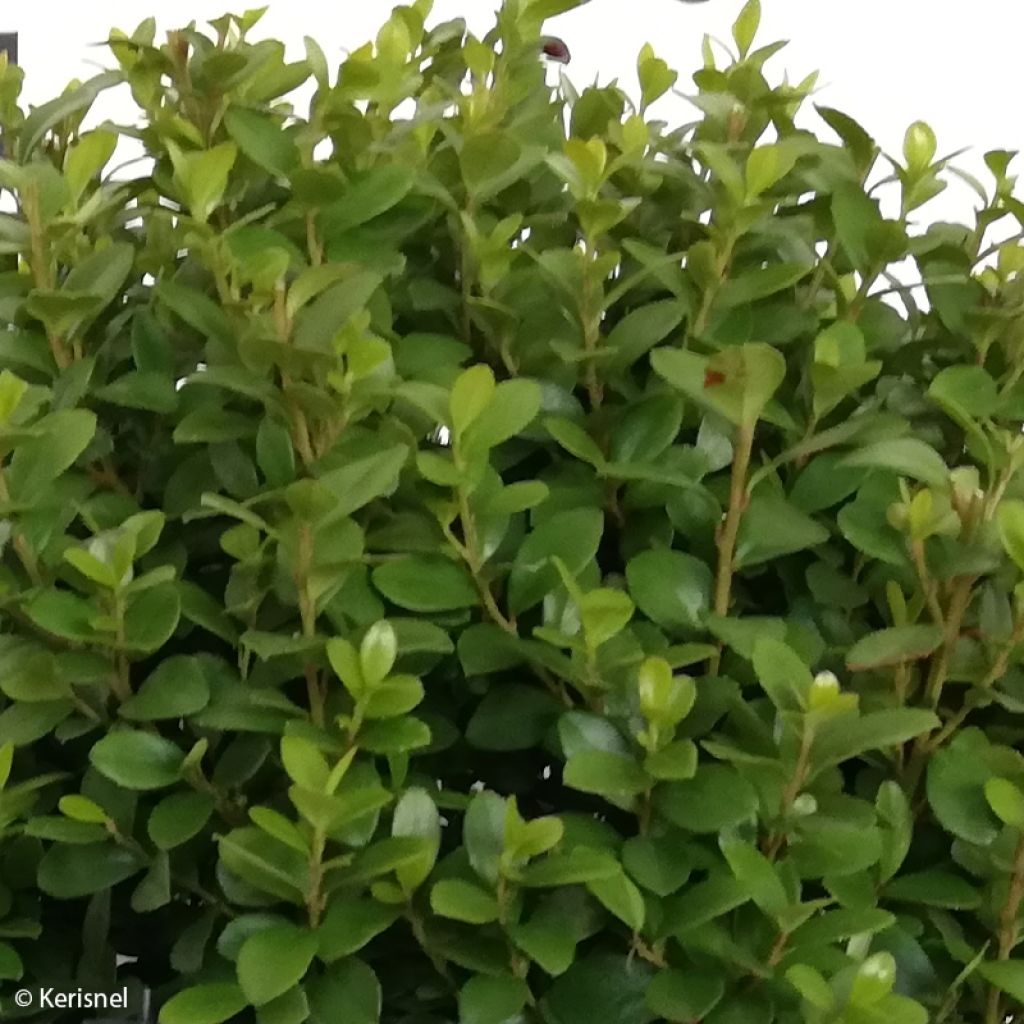

Myrsine africana
Myrsine africana
Myrsine africana
African Boxwood, Cape Myrtle
This item cannot be shipped to the selected country
Delivery charge from €5.90
Delivery charge from €5.90
More information
Schedule delivery date,
and select date in basket
This plant carries a 24 months recovery warranty
More information
We guarantee the quality of our plants for a full growing cycle, and will replace at our expense any plant that fails to recover under normal climatic and planting conditions.
From €5.90 for pickup delivery and €6.90 for home delivery
Express home delivery from €8.90.
From €5.90 for pickup delivery and €6.90 for home delivery
Express home delivery from €8.90.

Does this plant fit my garden?
Set up your Plantfit profile →
Description
Myrsine africana is an evergreen bush commonly known as African boxwood due to its origins and resemblance to boxwood. Not very tall, but very dense, it bears small, very shiny dark green leaves. It adapts to any well-drained soil, in shade as well as in sunlight, and can be shaped through regular pruning. Left to grow freely, it reveals its full personality. More flexible than boxwood, this plant has a cheerful and elegant appearance and does not attract parasites. However, it is best cultivated in open ground in warm regions where frosts are not too severe. It is ideal for greening difficult areas.
Myrsine africana belongs to the Primulaceae family. It originates from South Africa, Macaronesia, and also southern Asia. It is a ubiquitous species, capable of growing on damp rocks, in forests, or in dry meadows. It is a slow-growing bush, but faster than boxwood. Its habit is naturally dense and compact, initially a bit stiff but becomes more flexible over time. It will reach about 1.5m (5ft) in height, depending on growing conditions, with a diameter of about 1m (3ft). The plant can produce a few suckers at the base. The young stems are reddish and flexible. The leaves are evergreen, leathery, rounded, and very shiny. They are light green turning dark green. In winter, they sometimes take on coppery tones. They do not exceed 1.5cm (1in) in length and 1cm (1in) in width. The bush is dioecious, meaning there are male and female plants. In May-June, inconspicuous greenish to creamy-white flowers appear at the base of the leaves, followed by small violet berries on female plants, in the presence of male plants. Male flowers have reddish anthers.
Myrsine africana is an elegant bush, whether planted in open ground, placed in isolation, at the edge of a shrub grove, in a small hedge, or in a bed, as well as in a large pot. This plant also has a great effect in a large rockery. It would undoubtedly be used more if it were a little hardier given its numerous qualities. If its vegetation is damaged by a severe winter, it can regrow from the stump. It can be planted with, for example, dwarf or flowering pomegranates, Myrtus tarentina, Lonicera nitida, Rhamnus alaternus (variegated or not), small-sized photinias, Mexican orange blossoms, etc. It is worth noting that this bush tolerates sea spray, and adapts perfectly to coastal areas.
Report an error about the product description
Myrsine africana in pictures
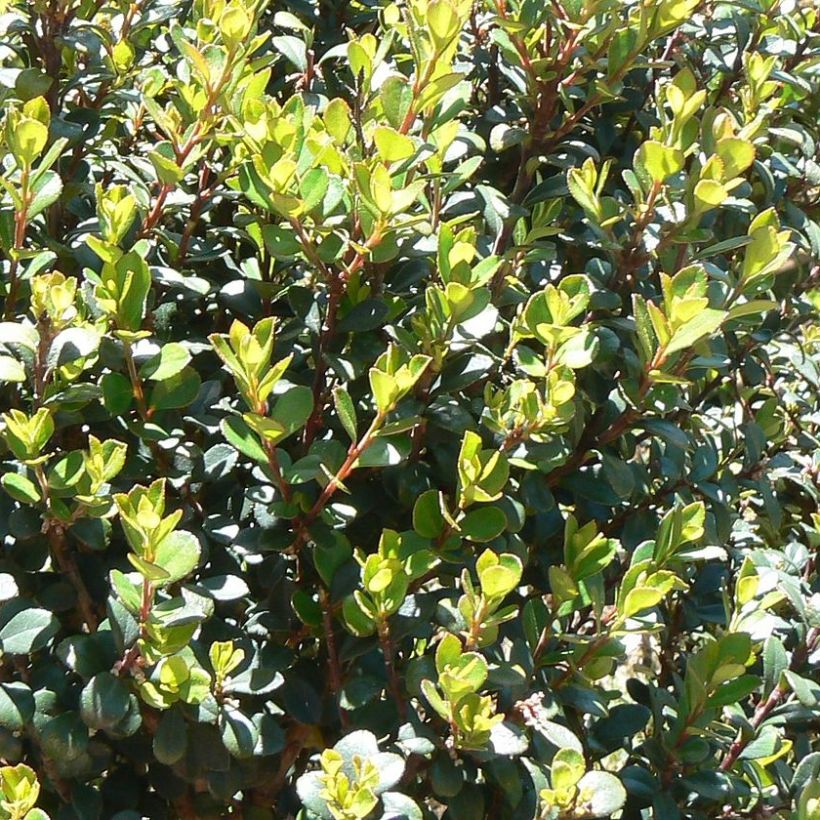

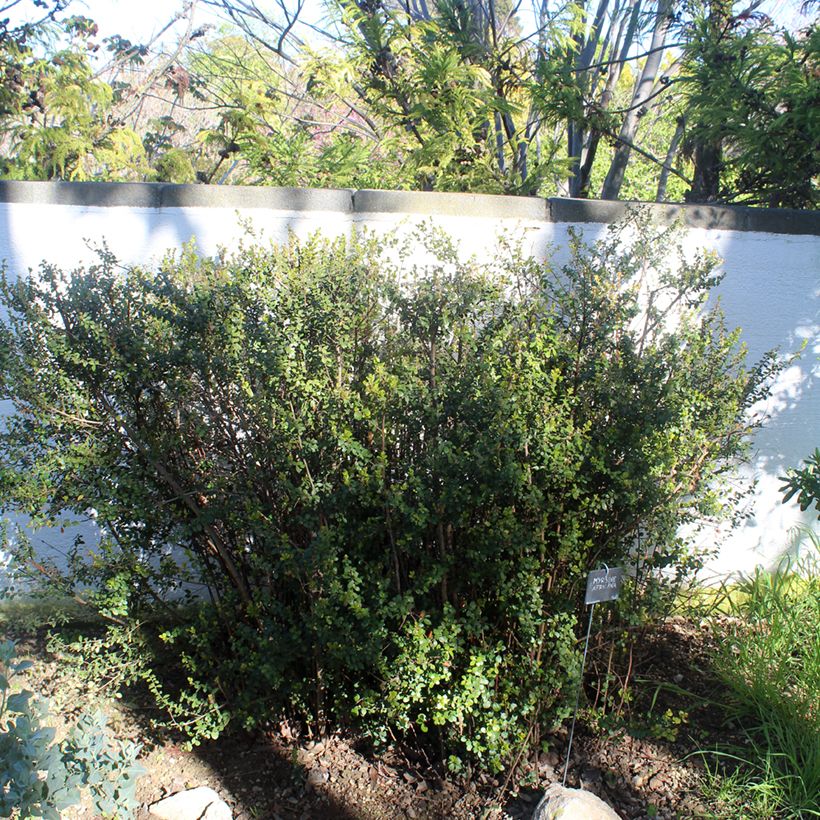

Plant habit
Flowering
Foliage
Botanical data
Myrsine
africana
Myrsinaceae
African Boxwood, Cape Myrtle
South Africa
Other Myrtus - Myrtle
Planting and care
Myrsine africana has only one requirement in terms of soil: that it be properly drained. Soil that is not too wet, whether clay-loamy, stony or sandy, slightly acidic, neutral or even calcareous will do. Plant it after the last frost in cool climates, and in September-October in hot and dry climates. It will thrive in the sun, in partial shade or even in full shade in hot climates, sheltered from cold winds. Under these conditions, it is hardy down to -8°C (17.6°F) once mature and can regrow from the stump in spring after severe pruning. Water only to help the plant establish itself and during the first two summers if it is very dry. Afterwards, the bush will completely do without watering, even in hot climates. To shape it, you can cut back the stems in March, June and September.
Cultivation in pots:
Ensure good drainage at the bottom of the pot, which should be of a large volume. Use a lightweight substrate, enriched with leaf compost, and apply slow-release fertiliser in late winter and autumn. Water generously in summer, while allowing the potting soil to dry between waterings.
In cold regions, overwinter the pot in a very bright but unheated location.
Planting period
Intended location
Care
-
, onOrder confirmed
Reply from on Promesse de fleurs
Evergreen shrubs
Haven't found what you were looking for?
Hardiness is the lowest winter temperature a plant can endure without suffering serious damage or even dying. However, hardiness is affected by location (a sheltered area, such as a patio), protection (winter cover) and soil type (hardiness is improved by well-drained soil).

Photo Sharing Terms & Conditions
In order to encourage gardeners to interact and share their experiences, Promesse de fleurs offers various media enabling content to be uploaded onto its Site - in particular via the ‘Photo sharing’ module.
The User agrees to refrain from:
- Posting any content that is illegal, prejudicial, insulting, racist, inciteful to hatred, revisionist, contrary to public decency, that infringes on privacy or on the privacy rights of third parties, in particular the publicity rights of persons and goods, intellectual property rights, or the right to privacy.
- Submitting content on behalf of a third party;
- Impersonate the identity of a third party and/or publish any personal information about a third party;
In general, the User undertakes to refrain from any unethical behaviour.
All Content (in particular text, comments, files, images, photos, videos, creative works, etc.), which may be subject to property or intellectual property rights, image or other private rights, shall remain the property of the User, subject to the limited rights granted by the terms of the licence granted by Promesse de fleurs as stated below. Users are at liberty to publish or not to publish such Content on the Site, notably via the ‘Photo Sharing’ facility, and accept that this Content shall be made public and freely accessible, notably on the Internet.
Users further acknowledge, undertake to have ,and guarantee that they hold all necessary rights and permissions to publish such material on the Site, in particular with regard to the legislation in force pertaining to any privacy, property, intellectual property, image, or contractual rights, or rights of any other nature. By publishing such Content on the Site, Users acknowledge accepting full liability as publishers of the Content within the meaning of the law, and grant Promesse de fleurs, free of charge, an inclusive, worldwide licence for the said Content for the entire duration of its publication, including all reproduction, representation, up/downloading, displaying, performing, transmission, and storage rights.
Users also grant permission for their name to be linked to the Content and accept that this link may not always be made available.
By engaging in posting material, Users consent to their Content becoming automatically accessible on the Internet, in particular on other sites and/or blogs and/or web pages of the Promesse de fleurs site, including in particular social pages and the Promesse de fleurs catalogue.
Users may secure the removal of entrusted content free of charge by issuing a simple request via our contact form.
The flowering period indicated on our website applies to countries and regions located in USDA zone 8 (France, the United Kingdom, Ireland, the Netherlands, etc.)
It will vary according to where you live:
- In zones 9 to 10 (Italy, Spain, Greece, etc.), flowering will occur about 2 to 4 weeks earlier.
- In zones 6 to 7 (Germany, Poland, Slovenia, and lower mountainous regions), flowering will be delayed by 2 to 3 weeks.
- In zone 5 (Central Europe, Scandinavia), blooming will be delayed by 3 to 5 weeks.
In temperate climates, pruning of spring-flowering shrubs (forsythia, spireas, etc.) should be done just after flowering.
Pruning of summer-flowering shrubs (Indian Lilac, Perovskia, etc.) can be done in winter or spring.
In cold regions as well as with frost-sensitive plants, avoid pruning too early when severe frosts may still occur.
The planting period indicated on our website applies to countries and regions located in USDA zone 8 (France, United Kingdom, Ireland, Netherlands).
It will vary according to where you live:
- In Mediterranean zones (Marseille, Madrid, Milan, etc.), autumn and winter are the best planting periods.
- In continental zones (Strasbourg, Munich, Vienna, etc.), delay planting by 2 to 3 weeks in spring and bring it forward by 2 to 4 weeks in autumn.
- In mountainous regions (the Alps, Pyrenees, Carpathians, etc.), it is best to plant in late spring (May-June) or late summer (August-September).
The harvesting period indicated on our website applies to countries and regions in USDA zone 8 (France, England, Ireland, the Netherlands).
In colder areas (Scandinavia, Poland, Austria...) fruit and vegetable harvests are likely to be delayed by 3-4 weeks.
In warmer areas (Italy, Spain, Greece, etc.), harvesting will probably take place earlier, depending on weather conditions.
The sowing periods indicated on our website apply to countries and regions within USDA Zone 8 (France, UK, Ireland, Netherlands).
In colder areas (Scandinavia, Poland, Austria...), delay any outdoor sowing by 3-4 weeks, or sow under glass.
In warmer climes (Italy, Spain, Greece, etc.), bring outdoor sowing forward by a few weeks.

































